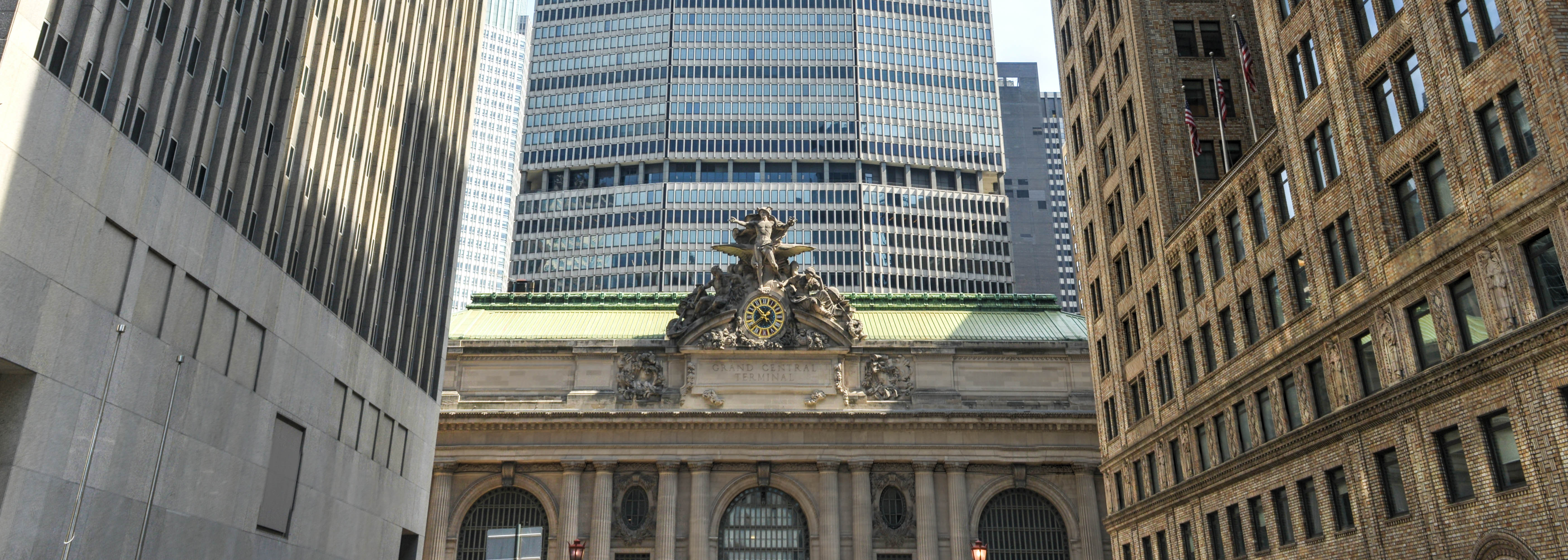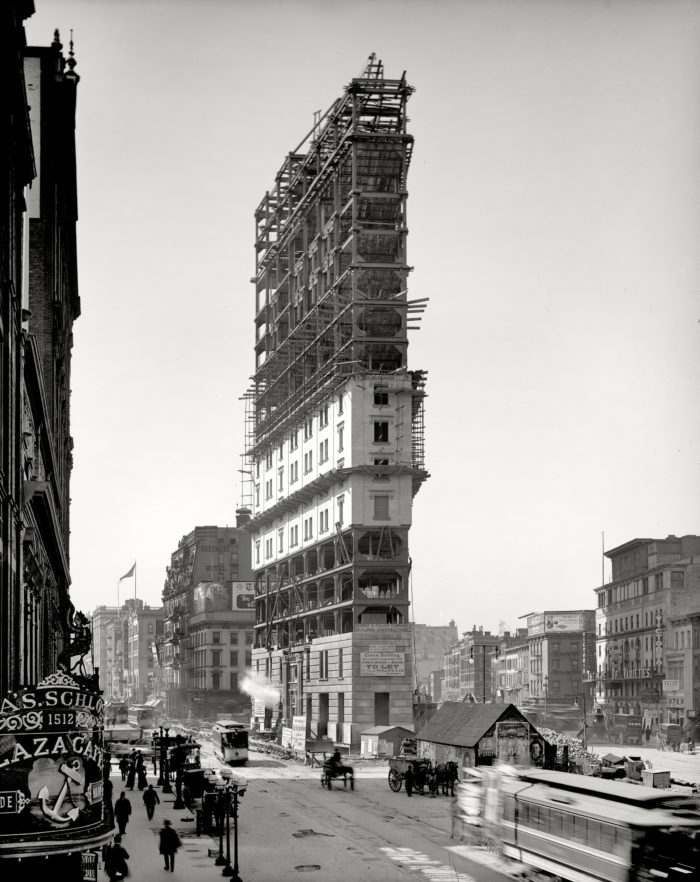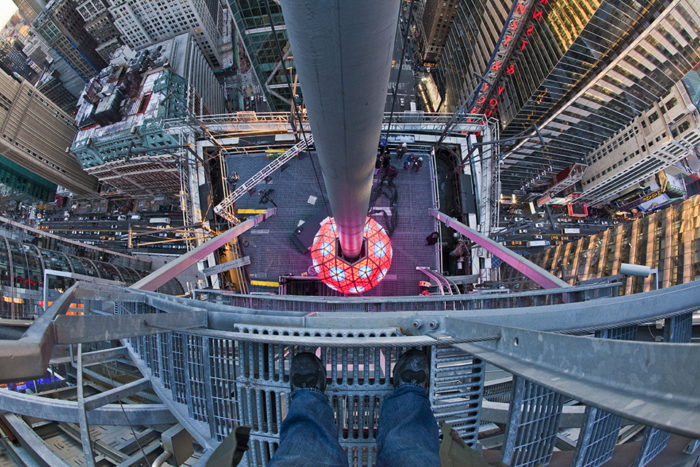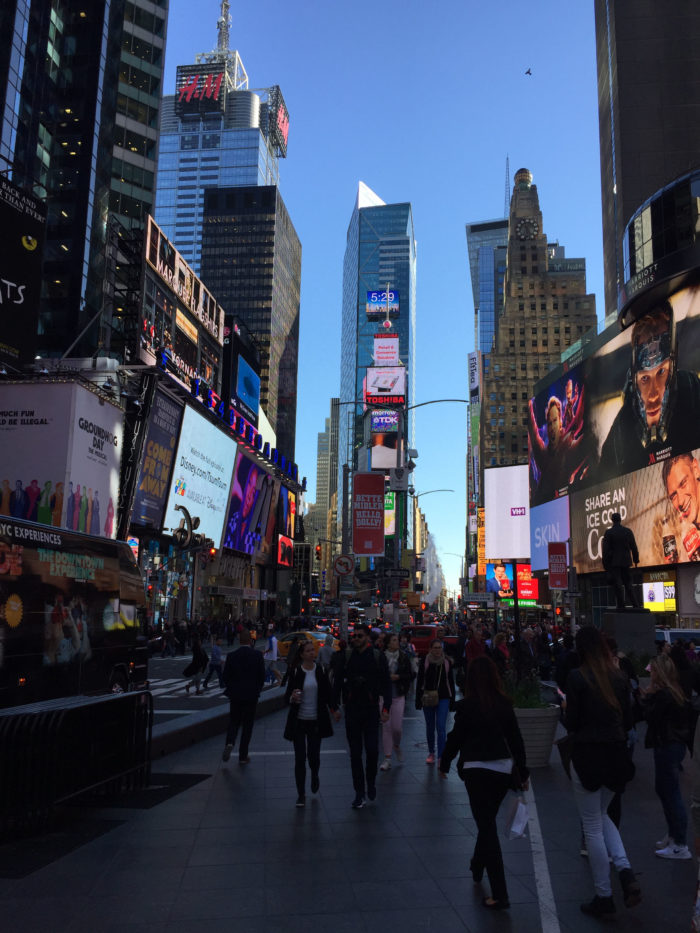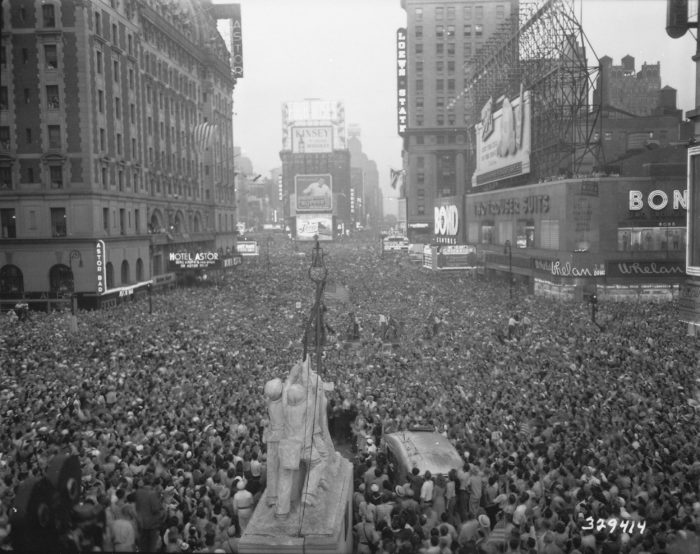Before it was dubbed the Crossroads of the World or the Heart of the Great White Way—or even named Times Square—the micro-neighborhood surrounding the intersection of Seventh Avenue and Broadway was the center of New York’s horse-and-carriage trade. In the 1870s the city rather unimaginatively named it Longacre Square, after Long Acre, London’s horse-and-carriage hub. The name lives on in Longacre House, an apartment building at 50th Street and Eighth Avenue, one block from the former home of William Henry Vanderbilt’s American Horse Exchange, which became the Winter Garden Theatre in 1910.
As Manhattan grew more populous, savvy businessmen looked northward—in this case north of what are now Chelsea and Murray Hill. John Jacob Astor had already added to his fortune by selling off lots of what was once the farm of Revolutionary War general John Morin Scott to various developers and hoteliers. Oscar Hammerstein I, whose grandson would provide the lyrics for musicals including “The King and I” and “The Sound of Music,” opened Longacre Square’s first theater, the Olympia, in 1895, but already the area had become something of a red-light district, an extension of rough-and-rowdy Hell’s Kitchen.
One Times Square under construction, 1903. Image: public domain/Wikimedia
The construction of the city’s first subway, with a station promised at 42nd Street and Seventh Avenue, led “New York Times” publisher Adolph S. Ochs to build a skyscraper there to house the operations of his newspaper. When the “Times” moved there in 1904, in what was then Manhattan’s second tallest building, the city renamed the area Times Square in its honor. Even though the “Times” relocated to even larger quarters nine years later and sold its One Times Square in 1961, the name Times Square stuck.
Another milestone that helped transform the area occurred just several weeks after the “Times” moved in: The first electrified advertisement went live, on the side of a bank at 46th Street and Broadway. More bright lights followed, as did more people, thanks to the opening of the IRT’s Times Square station in 1905 and the construction of the Lincoln Highway. The country’s first transcontinental road, the Lincoln Highway ran from San Francisco’s Lincoln Park to 42nd Street and Broadway.
The 2013 New Year’s Eve ball, viewed from above prior to its drop. Image: Anthony Quintano/Flickr
The first New Year’s Eve ball drop from One Times Square rang in 1908, with a 700-pound ball illuminated by 100 25-watt bulbs. (The current ball weighs 11,875 pounds and has 32,256 lights.) By this time scores of theaters, nightclubs, and upscale eateries had moved into the area as well. The period between World War I and the Depression was Times Square’s heyday, though not everyone who visited was enamored: It was a 1923 visit that inspired director Fritz Lang to create his dystopian masterpiece “Metropolis.”
The Great Depression numbered many of the area’s theaters and clubs among its victims. Seedy saloons, burlesque halls, and brothels replaced them; by the 1960s peep shows, porn theaters, sex shops, streetwalkers, and drug marketplaces had joined them. The Times Square of the musical “42nd Street” had given way to the Times Square of “Taxi Driver.”
Times Square today. Image: Tjeerd Wiersma/Flickr
In the 1980s the city worked vigorously to reverse the area’s decline. Porn purveyors were forced out; the Disney Store, the Hard Rock Café, and the PlayStation Theater were in. Tenants are in fact required to display Jumbotrons or other large illuminated signs. To further entire visitors, Broadway between 42nd and 47th Streets has been broken up into block-long pedestrian plazas complete with seating, food kiosks, and live music. Even those who remain nostalgic about the seamier days of Times Square appreciate that in addition to dramatically reducing crime and auto accidents, the revamp requires costume-clad Elmos and Incredible Hulks to stay in a designated area.
Today, with more than 131 million visitors a year, Times Square is the second most visited tourist attraction in the world; only the Las Vegas Strip is more popular. Roughly a million people, locals and tourists alike, crowd into the area for the annual New Year’s Ball drop. That number, however, is only half of the estimated crowd size on V-J Day—August 14, 1945—the celebration of which was immortalized in Alfred Eisenstaedt’s photo of a sailor kissing a woman in the middle of Times Square.
Times Square on V-J Day. Image: public domain/Wikimedia


